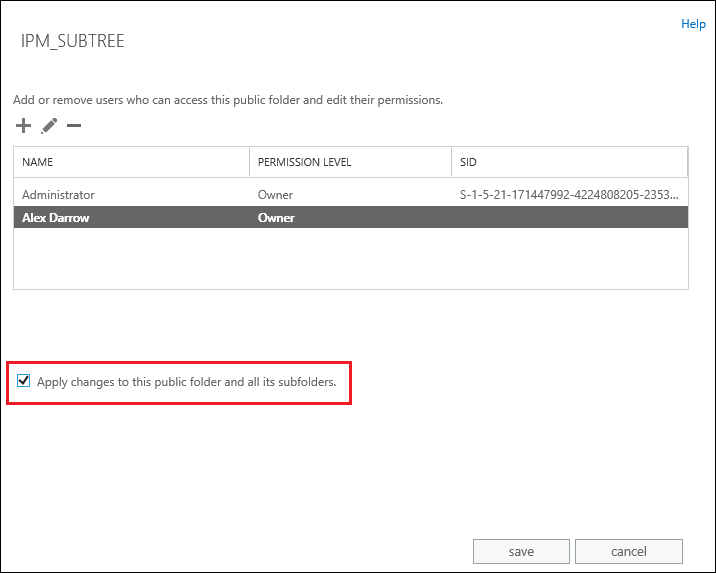
The only account that is being actively monitored is most users still email those legacy accounts, so they can’t just be deleted. The following table is a good visual of how all of these accounts and email addresses were setup in relation to one-another when I made the conversion: Eventually, this was changed again to another shared user mailbox Service Desk. This was eventually abandoned in favor of a shared user mailbox Help Desk. For years, the Service Desk watched a mail-enabled public folder for service requests Support. This set of email addresses were very important they were all related to the company Service Desk / Help Desk / Support Desk. In this environment, there were quite a few changes that took place over the course of a two year period.

However, they do represent the actual addresses and are set up the same.

#Exchange public folder user context how to
Note: Email addresses used in this How To are from my lab not real email addresses. We were working with Exchange 2010, but I have also done this the same way in Exchange 2007. Also in the request, was to convert an active user mailbox’s e-mail addresses to additional e-mail addresses of that same shared mailbox. The other day, a colleague of mine requested my help in converting a mail-enabled public folder into additional e-mail addresses of a shared mailbox. There are quite a few ways to word this listed above are just a few of the possibilities.

Move E-Mail Addresses to Another Mailbox. Convert Mail-Enabled Public Folder and User Mailbox to Additional E-Mail Addresses of Another Mailbox in Exchange 2010.Ĭonvert E-Mail Addresses of a Mail-Enabled Public Folder and a User Mailbox to Additional E-Mail Addresses of a Shared Mailbox.


 0 kommentar(er)
0 kommentar(er)
